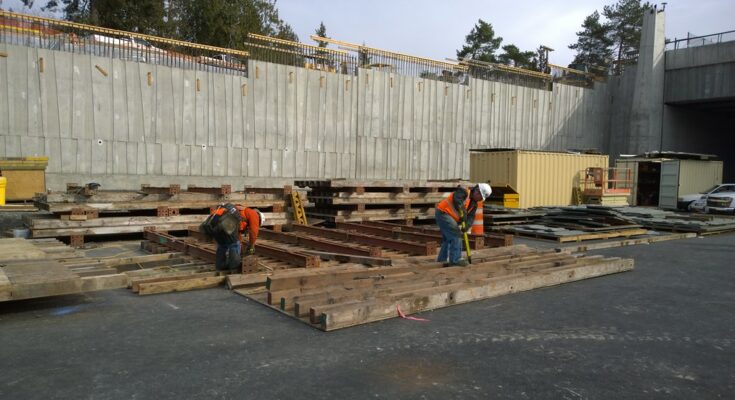Construction works, both in building and public works, are carried out with multiple types of machinery, from earthmoving, concrete mixers, trucks, compactors, concrete vibrators, hydraulic hammers, saws for all types of materials to light manual machines.
With the mechanization of production processes, replacing manual tools with machinery, tasks have been optimized, improved, and facilitated, but new risks have also been introduced. This progress must be influenced by preventive action principles, being considered from its design and minimizing the origin’s threats.
All machines generate noise and vibrations to a greater or lesser extent, being intrinsic to their operation. Noise and beats have a common origin in machinery, producing when high levels are generated, a feeling of discomfort followed by a reduction in safety and the possibility of causing occupational diseases.
Sound is the auditory effect produced by an air vibration characterized by a regular succession in time and space of expansions and compressions. Sound is the acoustic effect produced by an air vibration represented by a steady line in time and space of expansions and contractions. Depending on the duration, type, place, and moment in which it occurs, it can be uncomfortable, producing adverse health effects.
When the sounds are loud, they cause discomfort and discomfort, make communication difficult, cause the non-detection of alarm signals, generate greater tension in the worker, alter concentration, and produce irreversible damage to the auditory system. Noise can cause occupational diseases such as hearing loss, one of the most common occupational diseases. There is currently no surgery for this type of disease that can correct this hearing loss. In most cases, hearing aids are not useful either.
We must also not forget that both generate pollution in the environment, which is increasingly controlled with more significant effort. Implementing solutions such as sound wall construction can reduce both vibration and noise levels, starting by acting on the source itself, i.e., on the machinery itself. For this reason, markets and regulations are becoming more and more demanding, forcing manufacturers to research and apply new technologies and mechanisms to reduce them.
Once the source of noise and its characteristics have been identified, several measures can be taken to prevent damage to workers and people nearby; one of them is the signaling of high volumes of noise in the area so that people are aware, alert, and take precautions, the implementation of protocols that allow working at appropriate times of the day when the reverberation is not so overwhelming, equipment that is not being used at that time can be avoided, workers can be provided with individual isolation equipment and sound wall construction for outdoors, this type of installation dramatically reduces the sound and vibration produced by the machinery, thus helping to prevent and mitigate possible acoustic injuries that are not reversible.
Sound wall construction is an effective method of noise mitigation and mitigation of highway, railroad, and industrial noise sources (there would be others such as cessation of activity or source controls).
Some barriers consist of a masonry wall or earth mound or their combination, such as a wall on top of a slope. Acoustic abatement walls are commonly constructed using steel, concrete, brick, wood, plastic, wool insulation, or composites. In many extreme cases, the entire roadway is surrounded by an anti-sound structure or covered inside a tunnel using the cut-and-cover method. The acoustic barrier can be built-in private or public areas, with the right-of-way. Since sound levels are measured on a logarithmic scale, a reduction of nine decibels is equivalent to eliminating about 80% of unwanted noise. Sound wall construction can be instrumental in abating noise pollution.













